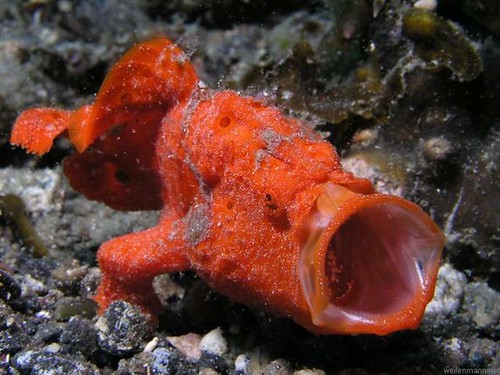Please visit my new blog on the link below, and let me know what you think of it!
Genesis Nature Blog

Discover the Beauty of the Ocean

 Cuttlefish have some of the most incredible camouflage of anything in the animal kingdom. Their highly complex brain allows them to control the cells in their skin to blend in perfectly with their surroundings, or flash colorful displays much like an LED billboard.
Cuttlefish have some of the most incredible camouflage of anything in the animal kingdom. Their highly complex brain allows them to control the cells in their skin to blend in perfectly with their surroundings, or flash colorful displays much like an LED billboard.
 Cuttlefish are not actually fish as their name implies. They are mollusks, close relatives of octopus and squid. Unlike their boneless cousins, cuttlefish have an internal shell which acts a skeleton to help them hold their shape. Cuttlefish shells are often sold at pet stores as calcium supplements for birds.
Cuttlefish are not actually fish as their name implies. They are mollusks, close relatives of octopus and squid. Unlike their boneless cousins, cuttlefish have an internal shell which acts a skeleton to help them hold their shape. Cuttlefish shells are often sold at pet stores as calcium supplements for birds. Cuttlefish use their skin for more than just camouflage. They can also use their amazing control of color to communicate. They often change to bright colors when they are angry to warn other sea creatures or other cuttlefish to stay away. They also use their arms to communicate, holding them in certain positions as if they are using sign language.
Cuttlefish use their skin for more than just camouflage. They can also use their amazing control of color to communicate. They often change to bright colors when they are angry to warn other sea creatures or other cuttlefish to stay away. They also use their arms to communicate, holding them in certain positions as if they are using sign language. I once found a cuttlefish while I was snorkeling in Cozumel. Unlike most marine life, it seemed genuinely curious about me. I swam in close and moved my fingers into the position it had its tentacles in. It waved its arms back and flashed bright colors at me as if it was trying to carry on a conversation. After a few minutes, the cuttlefish darted away and disappeared. I still wonder if I said something mean or just wasn't much fun to talk to.
I once found a cuttlefish while I was snorkeling in Cozumel. Unlike most marine life, it seemed genuinely curious about me. I swam in close and moved my fingers into the position it had its tentacles in. It waved its arms back and flashed bright colors at me as if it was trying to carry on a conversation. After a few minutes, the cuttlefish darted away and disappeared. I still wonder if I said something mean or just wasn't much fun to talk to. Pistol Shrimps are tiny creatures with a deadly weapon. They are capable of shooting supersonic blasts from their fingertips with enough force to instantly stun or kill their prey.
Pistol Shrimps are tiny creatures with a deadly weapon. They are capable of shooting supersonic blasts from their fingertips with enough force to instantly stun or kill their prey. A pistol shrimp will lie in wait under a rock or in a burrow until food comes along. When it is in range, the shrimp will forcefully snap its oversize claw shut, shooting out sonic waves that incapacitate its prey. The helpless victim is dragged unconscious into the burrow and eaten by the pistol shrimp.
A pistol shrimp will lie in wait under a rock or in a burrow until food comes along. When it is in range, the shrimp will forcefully snap its oversize claw shut, shooting out sonic waves that incapacitate its prey. The helpless victim is dragged unconscious into the burrow and eaten by the pistol shrimp. Another unusual thing about pistol shrimps is that they often allow a fish to live with them. Certain kinds of goby fish often share burrows with pistol shrimp. The fish serves as a guard dog, protecting the shrimp from bigger predators. In return, the pistol shrimp works hard to keep the burrow clean and excavate their home.
Another unusual thing about pistol shrimps is that they often allow a fish to live with them. Certain kinds of goby fish often share burrows with pistol shrimp. The fish serves as a guard dog, protecting the shrimp from bigger predators. In return, the pistol shrimp works hard to keep the burrow clean and excavate their home.


 Like most angler fish, frogfish have a very clever method of hunting prey. Instead of going out to find their food, they bring their food to them. Frogfish have a small growth on their heads that looks like a small worm or fish. They dangle this lure in front of their mouth, tricking other fish into thinking it is food.
Like most angler fish, frogfish have a very clever method of hunting prey. Instead of going out to find their food, they bring their food to them. Frogfish have a small growth on their heads that looks like a small worm or fish. They dangle this lure in front of their mouth, tricking other fish into thinking it is food.

